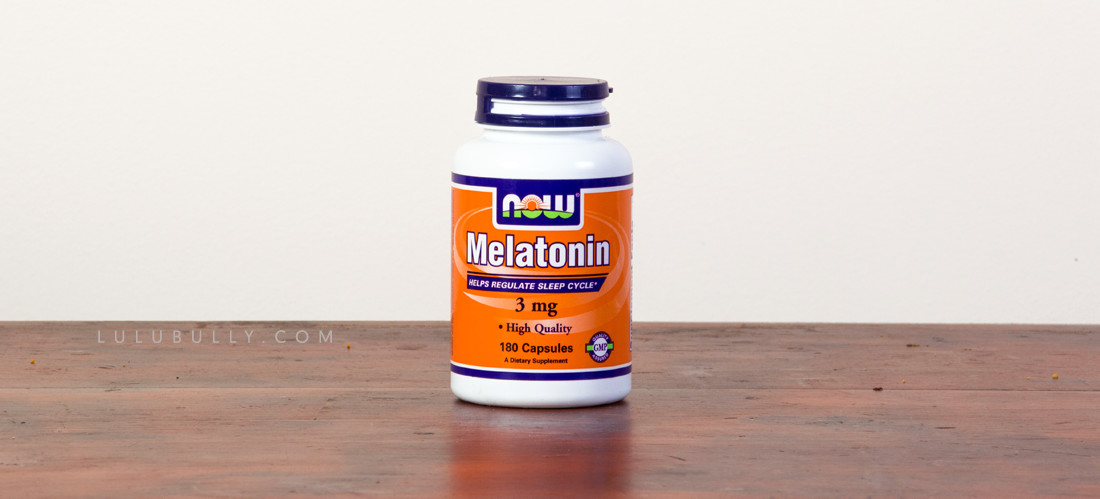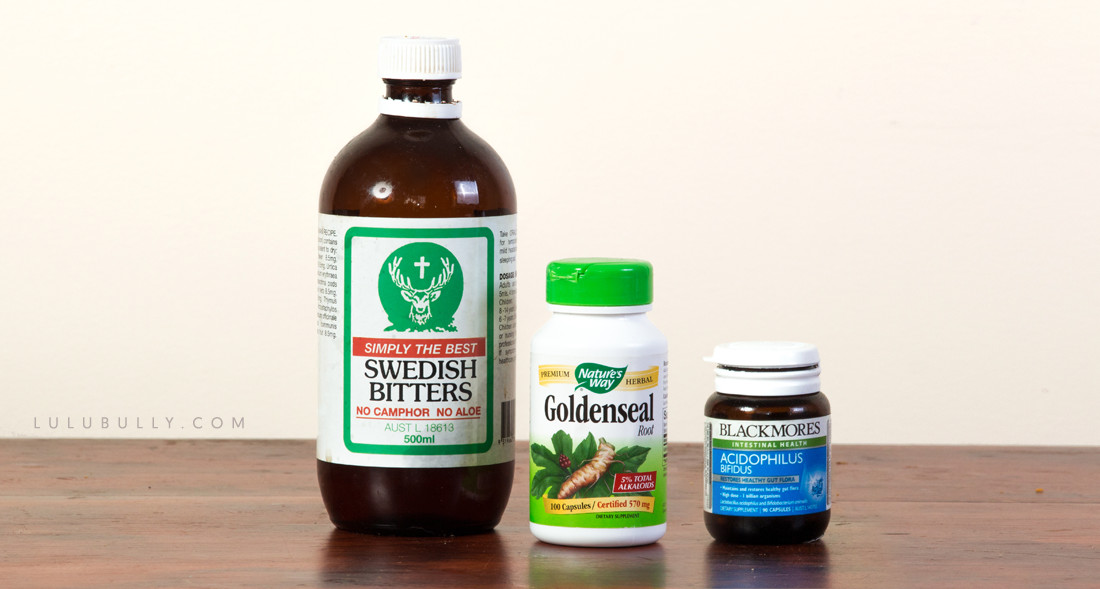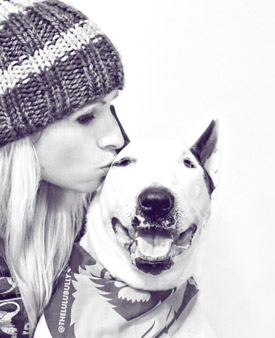Tummy Trouble
There are often differences between treatments that are safe for humans and safe for dogs. However these 3 brilliant little natural remedies do wonderful things for everyone in the family when it comes to a grumbly tummy!
Golden Seal Root – Used traditionally in Native American medicine, and in common use by herbalists and naturopaths today, the root of the Golden Seal plant is known for its antimicrobial, astringent and anti-inflammatory properties making it a unique natural digestive aid and one of my personal favourites.
Goldenseal root contains the natural antimicrobial alkaloid berberine, proven effective against a number of disease-causing bacteria species including Staphylococcus, Streptococcus, and Entamoeba histolytica, along with common offenders of bacterial gastroenteritis; E. coli and Salmonella typhi. Goldenseal’s ability to offer gastro relief is multi-faceted – its game is strong when combating tummy upsets caused by bad bacteria, and as an astringent it also soothes mucosal tissues and can help heal inflamed cells. I often use Goldenseal myself, it’s one of my go-to herbs for digestive relief and at the right dosage it’s safe for dogs too and works wonders for Lulu on the odd occasion she has an upset tummy (usually from eating something she shouldn’t have).
The Goldenseal I use is available from iHerb with worldwide shipping HERE (wherever you buy your Goldenseal, please be sure that it’s sustainably sourced as wild Goldenseal is endangered).
Dosage: I take 1 capsule myself at the suspicion of food poisoning, or mix the contents of 1 capsule with liquorice root powder, slippery elm powder and water to make a wonderful tummy soother for indigestion, as needed up to twice daily. Lulu is just under half my weight so I give her between 1/3 and 1/2 a capsule emptied into a little bit of fresh mince the moment I see her get the I-need-to-go-outside-and-eat-grass crazy eyes, or any other signs of gastro distress (i.e. bloating, gas, diarrhoea). It never seems to fail to have her playing, wagging her tail and obviously feeling better within about 10minutes – like magic!
IMPORTANT: Goldenseal is an amazing curative in small doses but can be toxic in large amounts. I take care never to give Lulu (she weighs 25kgs) more than 1/2 a capsule (285mg) more than twice daily, and I don’t supplement with Goldenseal for longer than a week at a time.
More on Goldenseal HERE.
Probiotics – These little guys are an amazing, well, more than that, let’s say essential, supplement for preventing upset tummies and promoting healthy digestion (with the added bonus of healthy skin and immunity!). Beneficial ‘good’ bacteria plays a vital role in healthy digestion, nutrient absorption and defence against pathogens and toxins.
The aim should always be to ensure that good bacteria is the dominant force in the gastrointestinal ecosystem. When a dog’s diet is less-than-optimal (and particularly after a course of antibiotics) it’s easy for bad bugs to infiltrate and overrun the good ones – this is called dysbiosis. Dysbiosis dramatically alters the defence mechanisms of the gastrointestinal tract, significantly impacting the immune system and inflammatory responses. Symptoms of dysbiosis can include joint stiffness, itchy skin, fungal infections (ears, skin), acute environmental allergies, lethargy, irritability, loss of appetite, bloating, diarrhoea, gas.
Regularly supplementing with a quality probiotic will strengthen both a dog’s digestive processes and immune system making them less prone to tummy upsets and other health issues. As a more immediate treatment, a quality probiotic can be very helpful in combating an influx of the type of bad bacteria that cause gastroenteritis/diarrhoea – it can provide relief and balance to supplement with quality probiotics more frequently during and after a periods of gastro distress (and during/after antibiotics). Read more about the importance of probiotics on the Lulu’s Menu page.
Dosage: For Lulu I supplement daily, emptying 1 capsule of a simple acidophilus and bifidus probiotic (1mil CFUs) into her food. I generally use the Blackmores brand available from Chemist Warehouse: http://www.chemistwarehouse.com.au/buy/31305/Blackmores-Acidophilus-Bifidus-90-Capsules
For those outside Australia there’s a pet specific probiotic formula available from iHerb with worldwide shipping: http://www.iherb.com/Jarrow-Formulas-Pet-Dophilus-2-5-oz-70-5-g-Powder/4295
Swedish Bitters – Swedish Bitters is an herbal elixir believed to go back as far as ancient Babylon and Egypt, the modern resurgence of which is credited to Swiss renaissance physician and botanist, Paracelsus. Recipes vary, but most contain a core group of about 10-15 herbs (angelica being the primary ingredient), the tincture of which is renowned as a digestive tonic that soothes and stimulates digestion, promotes healthy bile, acid and enzyme secretion, alleviating bloating, flatulence, gas, cramps and nausea. Lulu loves it and a little bit in a small bowl of water genuinely seems to settle her stomach (mine too! Although I prefer drinking out of a cup… ).
I use Deer International Swedish Bitters which is camphor-free making bit much more palatable (camphor is a traditional ingredient of Swedish bitters), but there are many recipes for Swedish Bitters available online for those who want to make their own and include or exclude ingredients as desired.
Dosage: In cases of obvious nausea, bloating or gas I give Lulu 1 tsp of Deer brand Swedish bitters in a small bowl of water (approx 25oml) as needed – although she usually only drinks about half of that before getting side-tracked (likely because by the time she’s lapped up that much she’s already feeling better).




